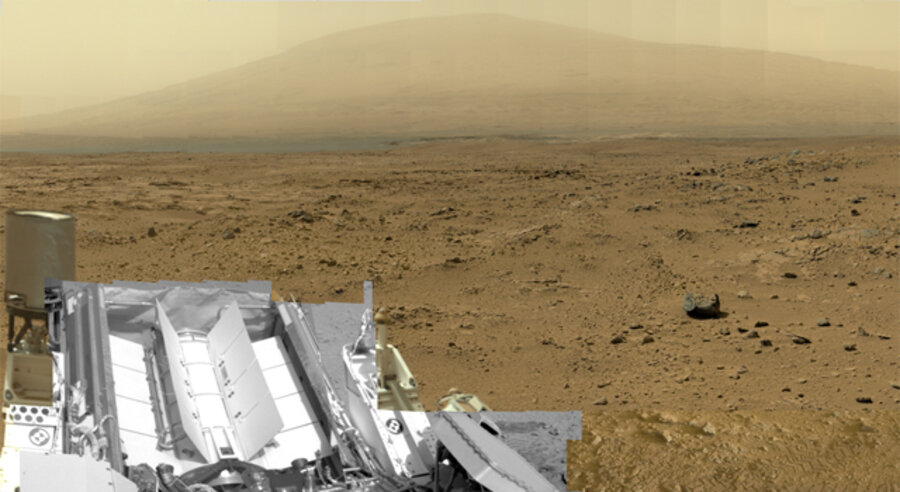Go big or go home: NASA's 1.3 billion-pixel panorama from Mars
Loading...
This is Mars like we’ve never seen it before.
NASA has released an interactive, billion-pixel view from the surface of Mars, an amalgamation of some 900 exposures shot from Curiosity’s cameras.
The grand, unearthly view stretches like a timeline of Curiosity’s journey, from the site where Curiosity collected its first rock sample to Mount Sharp, to which the rover is now chugging. The result is a landscape portrait as majestic as any Ray Bradbury novel: a red-brown, rocky desert, sloping to a distant mountain bathed in dust.
"It gives a sense of place and really shows off the cameras' capabilities," said Bob Deen of the Multi-Mission Image Processing Laboratory at NASA's Jet Propulsion Laboratory, in a statement. "You can see the context and also zoom in to see very fine details."
Deen assembled the panorama using some 850 frames from Curiosity’s telephoto camera, along with about 21 frames from its wider-angle camera and some 25 black-and-white frames from the rover’s Navigation Camera. The images were shot on different days in the fall of 2012, showing variation in atmospheric quality and light.
The 1.3-billion-pixel image can be seen at NASA’s website with zoom and pan tools that let earthling explorers tour the red planet. A scaled-down version of the photograph is also available for download.
The raw, single-frames that Curiosity sends home are regularly posted on NASA’s homepage for its rover.
Curiosity has been on Mars since August and has continuously sent back to Earth information that has changed our understanding of the far-off planet. Earlier this June, Curiosity found a rock containing clay-mineral elements that could only have formed in water – evidence that the dusty planet once had fresh water.








